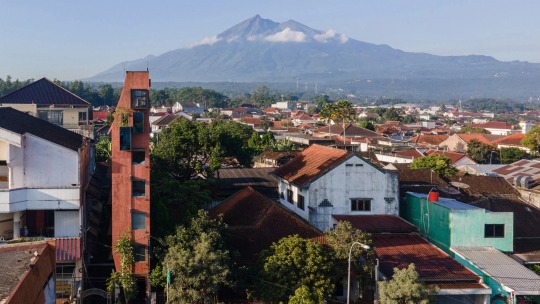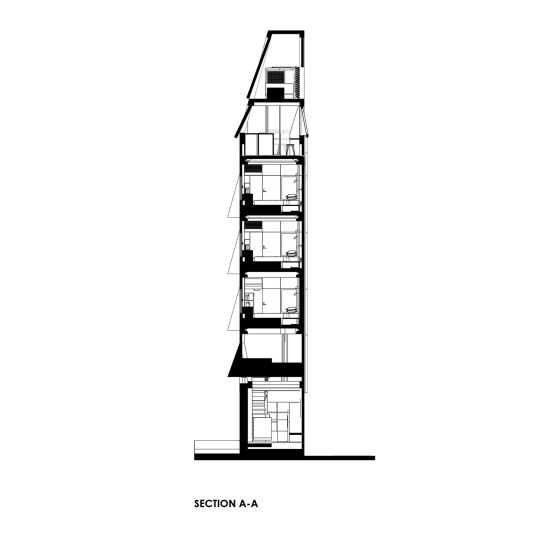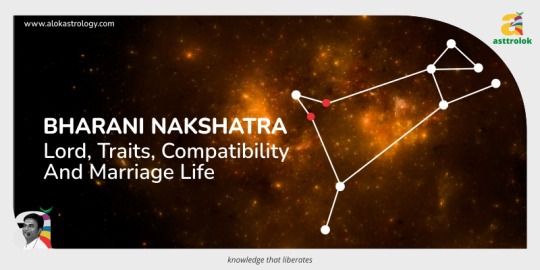#ary indra
Explore tagged Tumblr posts
Text













PituRooms, Central Java in Indonesia,
Dubbed the skinniest hotel ever, the Hotel occupies a site measuring just 2.8 metres in width.
It’s a unique seven-room hotel designed and owned by Ary Indra.
Courtesy: Sahabat Selojene
#art#design#architecture#boutique hotel#travels#interiors#interiordesign#PituRooms#indonesia#central java#sahabat selojene#ary indra#stairwell#stairway#staircase#staircases#stairs
223 notes
·
View notes
Text
Found some Ashwini Kumaras lore for anyone who wants to understand the nakshatra Ashwini even more.
PLEASEE I can't get over Indra's one-sided beef with them lmfaoo. He really tried to put obstacles their way but ultimately underestimated their wit & ambition.
Indra did not want them to drink the somaras because he did not want them to exercise any power.

Lord Indra also refused their right to acquire sacred knowledge, but he was disobeyed and they had to face his wrath once again but tried to come out of it unscathed using their wit.
A Twitter thread of the myth with more details 🧵

Very Jyestha-like to feel threatened and be domineering, as Indra was determined to kill and exile the Ashwini Kumaras. These two nakshatras will naturally have the rival/enemies trope going on. So technically this is the ultimate Aries vs Scorpio beef.
58 notes
·
View notes
Text
my slightly belated 8th anniversary art!

I drew it with pencil, pen marker, coloured pencils and acrylics on A3 paper and feel so proud bcs it's basically my first time ever drawing both a male and chibi character 😻
wip sketches below the cut:

#art#artist#traditional art#drawing#traditional drawing#fanart#traditional fanart#isehyme#msl#msl game#monster super league#aris#indra#traditional artist#illustration#starry sky#airship#chibi#anime#musical notes#magic#rainbow#cute art#cute fanart#latecia#isekai#astromon#colored pencils#acrylics
4 notes
·
View notes
Text

[oc] them!
2 notes
·
View notes
Text
Pemkot Tangsel Berdayakan BKM Jalankan Program Bedah Rumah Sesuai Regulasi
Pemerintah Kota (Pemkot) Tangerang Selatan (Tangsel) melalui Dinas Perumahan, Kawasan Permukiman dan Pertanahan (Disperkimta) menggandeng Badan Keswadayaan Masyarakat (BKM) dalam program pembangunan, khususnya program perbaikan rumah tak layak huni (RUTLH). Pemberdayaan BKM sebagai mitra dan salah satu ujung tombak program Bedah Rumah ini tertuang dalam Peraturan Wali Kota (Perwal) Kota Tangerang…
#Anung Indra Kumara#Aries Kurniawan#Disperkimta Tangerang Selatan#Disperkimta Tangsel#Tangerang Selatan#Tangsel
0 notes
Text
I've been checking out my D60 chart and omg there are so many insights to be had! The D60 is the final stroke of your karma, the closest chart to your soul energy. It's the karma that pulls the strings in your life that you bring from past lives.
So from how I'm kind of starting to piece it together... the D60 is like the director of the movie, and the D1 is the movie itself. The D1 is how these karmas actually materialize into the world.
For example Marilyn Monroe has exalted Venus in her D60. In her D1 rashi chart it's in Aries. But the reason that she so easily attracted partners and had all consuming romances, was possibly from this Venus in Pisces in her D60. Perhaps she was so caught up in the dreamy, spiritual side of romance and love, that the way it actually manifested was through attracting difficult Aries-like partnerships. The ideal love in her heart didn't map out neatly into the real world. She also could have had her otherworldly beauty from this D60 Venus in Pisces.
In my own D60, the deity that rules my ascendant means "divine protection" and is a form of Lord Indra. In my D1, my ascendant is ruled by Indra, the nakshatra Vishaka! So this Indra energy could be something passed onto me through lifetimes.
Another interesting thing from my D60 is that I have Rahu Moon conjunction, which can denote someone who is psychic, but has poor psychic boundaries. It's interesting that in my D1, I have a very prominent 8th house. So perhaps in past lives, I had a lot of psychic intuition, but in this lifetime I am learning to manage it better...
44 notes
·
View notes
Text
💫Mythical Astrology💫
A collection of gods and goddesses associated with each sign~ Before you say something, yes! I AM aware that some of these deities are the same entity with different names. I wanted to include all names so readers could recognize the ones they knew :) Talk to me niiiiiiiiiiiiiiiice
Aries
Amun (Egyptian), Anat (Mesopotamian/Ugaritic/Egyptian), Ares (Greek), Badb (Irish), Belenus (Celtic), Cybele (Anatolian), Durga (Hindu), Hecate (Greek), Hestia (Greek), Indra (Hindu), Ishtar (Mesopotamian), Khnum (Egyptian), Macha (Irish), Marduk (Babylonian), Mars (Roman), Minerva (Roman), The Morrigan (Irish Celtic), Nergal (Mesopotamian), Ra (Egyptian), Sekhmet (Egyptian), Tiamat (Babylonian)
Taurus
Aphrodite (Greek), Asherah (Semitic), Astarte (Middle Eastern), Ba'al (Canaanite), Bacchus (Greco-Roman), Bast (Egyptian), Cernunnos (Celtic), Dionysus (Greek), Flora (Roman), Frigg (Norse), Gaia (Greek), Hathor (Egyptian), Horus (Egyptian), Indra (Hindu), Ishtar (Mesopotamian), Isis (Egyptian), Jupiter (Roman), Krishna (Hindu), Lakshmi (Hindu), Maia (Greek), Marduk (Babylonian), Mithra (Iranian), Osiris (Egyptian), Poseidon (Greek), Ptah (Egyptian), Venus (Roman), Zeus (Greek)
Gemini
Apollo (Greek), Artemis (Greek), Dumuzid (Sumerian), Enki (Sumerian), Hermes (Greek), Inanna (Mesopotamian), Janus (Roman), Krishna (Hindu), Mercury (Roman), Odin (Norse), Seshat (Egyptian), Thoth (Egyptian)
Cancer
Artemis (Greek), Ceres (Roman), Demeter (Greek), Diana (Roman), Isis (Egyptian), Juno (Roman), Kuan Yin (Chinese/Buddhist), Luna (Roman), Mercury (Roman)
Leo
Amun (Egyptian), Anat (Mesopotamian/Ugaritic/Egyptian), Bast (Egyptian), Cybele (Anatolian), Devi (Hindu), Diana (Roman), Durga (Hindu), Freyja (Norse), Hathor (Egyptian), Helios (Greek), Hera (Greek), Inanna (Mesopotamian), Ishtar (Mesopotamian), Juno (Roman), Mithra (Iranian), Nanna (Mesopotamian), Nergal (Mesopotamian), Ra (Egyptian), Sekhmet (Egyptian), Vishnu (Hindu)
Virgo
Anat (Mesopotamian/Ugaritic/Egyptian), Artemis (Greek), Demeter (Greek), Diana (Roman), Hestia (Greek), Inanna (Mesopotamian), Iris (Greek), Ishtar (Mesopotamian), Isis (Egyptian), Kore (Greek), Nanna (Mesopotamian), Odin (Norse), Persephone (Greek), Vesta (Roman)
Libra
Aphrodite (Greek), Athena (Greek), Cernunnos (Celtic), Frigg (Norse), Hephaestus (Greek), Isis (Egyptian), Justitia (Roman), Ma'at (Egyptian), Minerva (Roman), Mithra (Iranian), Nemesis (Greek), Njord (Norse), Shiva (Hindu), Thoth (Egyptian), Venus (Roman), Vishnu (Hindu)
Scorpio
Anubis (Egyptian), Ereshkigal (Mesopotamian), Hecate (Greek), Hel (Norse), Isis (Egyptian), Mars (Roman), Njord (Norse), Osiris (Egyptian), Persephone (Greek), Pluto (Roman), Set (Egyptian)
Sagittarius
Anat (Mesopotamian/Ugaritic/Egyptian), Artemis (Greek), Athena (Greek), Diana (Roman), Epona (Gallo-Roman), Hades (Greek), Isis (Egyptian), Jupiter (Roman), Mars (Roman), Nergal (Mesopotamian), Rhiannon (Welsh), Thor (Norse)
Capricorn
Agni (Hindu), Aphrodite (Greek), Ba'al (Canaanite), Dionysus (Greek), Ea (Babylonian), Enki (Sumerian), Faunus (Roman), Freyja (Norse), Freyr (Norse), Gaia (Greek), Hecate (Greek), Juno (Roman), Loki (Norse), Pan (Greek), Perun (Slavic), Saturn (Roman), Thor (Norse)
Aquarius
Astarte (Middle Eastern), Ea (Babylonian), Ishtar (Mesopotamian), Isis (Egyptian), Juno (Roman), Nut (Egyptian)
Pisces
Aegir (Norse), Aphrodite (Greek), Cupid (Roman), Diana (Roman), Ea (Babylonian), Enki (Sumerian), Eros (Greek), Neptune (Roman), Poseidon (Greek), Sedna (Inuit), Venus (Roman), Vishnu (Hindu)
#mythology#astrology#deities#gods#goddesses#associations#correspondences#egyptian#mesopotamian#greek#roman#celtic#norse#hindu
122 notes
·
View notes
Text
Bharani Nakshatra: Lord, Traits, Compatibility and Marriage Life

Bharani Nakshatra is the second nakshatra out of the 27 nakshatras in Vedic Astrology. It is situated in Aries and spans from 13°20′ to 26°40′. Bharani is ruled by the planet Venus, and is the signifier of Lord Yama. Bharani Nakshatra is known for its association with birth, creation, and fertility. It is believed to be a very powerful nakshatra and is considered to be the nakshatra of transformation. People born under Bharani Nakshatra are said to be confident, strong-willed, and energetic.
Know about the remedies of Bharani Nakshatra. Get an online astrology consultation by the world-renowned astrologer Mr. Alok Khandelwal.
Ruling planet of Bharani Nakshatra
The ruling planet of Bharani Nakshatra is Venus (Shukra), which signifies love, relationships, beauty, and creativity. Venus is also associated with the arts, music, and luxury. The influence of Venus makes people born under Bharani Nakshatra passionate and romantic. They are also known for their artistic abilities, and many of them pursue careers in creative fields such as art, music, or writing.
Personality traits associated with Bharani Nakshatra
Bharani Nakshatra influences relationships and career paths in different ways. People born under Bharani Nakshatra tend to be passionate and intense in their relationships. They are committed and loyal to their partner but their nature may deflect to a possessive and jealous one, which can cause problems in their relationships.
In terms of career, people born under Bharani Nakshatra are usually very driven and ambitious. They are often successful in careers that involve creativity and self-expression, such as art, music, or writing. They are also well-suited for careers in business or entrepreneurship, as they are natural leaders and have a strong sense of purpose.
People born under the Bharani Nakshatra are known for their confident and strong-willed personalities. They possess a great deal of energy and passion, which makes them highly creative and artistic individuals. Their romantic nature adds to their charm and makes them quite desirable.
However, they can also display negative traits such as impatience, stubbornness, jealousy, and possessiveness. Additionally, they can be overly sensitive, which can sometimes cause them to overreact to situations.
Compatibility with other nakshatras
As we can see the varieties in traits for Bharani Nakshatra, similarly other nakshatras are also show both compatibility and incompatibility, let’s explore with details:
Nakshatras that are compatible with Bharani Nakshatra:
Krittika Nakshatra: People born under Krittika Nakshatra share a fiery nature with those born under Bharani Nakshatra, making them highly compatible for marriage. Krittika Nakshatra is ruled by Agni, the God of Fire, which adds to their shared traits of energy, ambition, and passion.
Rohini Nakshatra: Rohini Nakshatra is ruled by the Moon and represents nurturing and caring qualities. People born under Bharani Nakshatra often appreciate these qualities, making Rohini Nakshatra a compatible match for married life.
Ardra Nakshatra: Ardra Nakshatra is ruled by Rudra, the God of storms and hunt, which makes people born under this Nakshatra highly independent and self-sufficient. This trait complements the leadership qualities of Bharani Nakshatra and makes them compatible.
Read Also:- 7 Marriage Problems That Astrology Can Solve
Nakshatras should be avoided for marriage life with Bharani Nakshatra
Ashlesha Nakshatra: Ashlesha Nakshatra is ruled by the serpent God and represents manipulative and secretive qualities. People born under Bharani Nakshatra may find it difficult to trust and connect with those born under Ashlesha Nakshatra, making them a less compatible match.
Jyeshtha Nakshatra: Jyeshtha Nakshatra is ruled by Indra, the God of thunder, and represents a competitive nature. People born under Bharani Nakshatra may find it difficult to deal with the competitive nature of those born under Jyeshtha Nakshatra, making them a less compatible match.
Moola Nakshatra: Moola Nakshatra is ruled by Nirriti, the Goddess of destruction, and represents negative qualities such as anger and jealousy. People born under Bharani Nakshatra may find it difficult to handle the negative traits of those born under Moola Nakshatra, making them a less compatible match.
Remedies for negative effects of Bharani Nakshatra
The following rituals and practises are used to counter the negative effects and balance Bharani Nakshatra:
Chanting Mantras: Chanting the mantras associated with Lord Yama, the ruler of Bharani Nakshatra, can help alleviate the negative effects of the Nakshatra. The mantra for Lord Yama is “Om Yamaya Namaha”and reciting the Shukra mantra “ॐ द्रां द्रीं द्रौं स: शुक्राय नम:”
Performing Pujas: Performing pujas and rituals dedicated to Lord Yama, Shanti Puja and the Vishnu Sahasranamam can help to alleviate the negative effects of Bharani Nakshatra.
Fasting: Observing fasts on Tuesdays can help reduce the negative effects of Bharani Nakshatra. Fasting is believed to bring balance and harmony to the energies associated with the Nakshatra.
Charity: Donating to charitable causes and helping those in need.
Meditation: Practicing meditation regularly can also help alleviate stress and anxiety, which are common issues faced by people born under Bharani Nakshatra.
Bharani Nakshatra is a powerful nakshatra associated with birth and creation. People are confident, energetic in addition to passionate and romantic. However, they can also be possessive and jealous, which can cause problems in their relationships. In terms of career, they are usually successful in careers that involve creativity and self-expression, as well as in business and entrepreneurship.
While Bharani Nakshatra can bring many positive qualities and attributes to those born under it, it is important to be aware of any negative effects that may arise. By following the remedies and practices mentioned above, individuals can balance the effects of this powerful nakshatra and achieve success and happiness in life.
Read Also:- Weekly Rashifal from 25th April to 1st May 2023
#astrology consultation#best online astrology consultation#Bharani Nakshatra#Compatibility with other nakshatras#effects of Bharani Nakshatra#marriage life with Bharani Nakshatra#nakshatra#remedies of Bharani Nakshatra#vedic astrologer in usa#vedic astrology consultation#asttrolok#astrology
27 notes
·
View notes
Text
Horses in Indian and Hindu Mythology

Aśva (अश्व)—Sanskrit word for the animal “horse”.
Aśva—The horse is said to have been born of the Creator’s feet.
The word for horse in Vedas is vaja. It is derived from the root vaj or uj, which also gives the word, vajra which means hard and mighty; it is also the name of Indra’s celebrated weapon with which he reduces his foes.
Thus, the word stands not only for the horse but also for the strength, speed, and impetuosity of a horse and for the general ideas of power, energy, swiftness, heroism, virility, and invincibility in war. The horse in Vedas symbolizes energy.
In Vedic Astrology, Ashwini Nakshatra is the first Nakshatra among the 27 Nakshatras, falling under the zodiac sign of Aries.
The word Ashwini means 'horse-like' or 'one who possesses horses' or 'one who tames horses'.
Aśva represents the number 7 in the “word-numeral system” (bhūtasaṃkhyā), which was used in Sanskrit texts dealing with astronomy, mathematics, and metrics, as well as in the dates of inscriptions and manuscripts in ancient Indian literature.
tip me via paytm : aashi2@paytm
— to know more about significance of horses in hindu mythology,
check the full post here 🧡
#horses#ashwini nakshatra#veda#rig veda#astrology community#astro community#vedic culture#vedic astrology#vedas#hindu mythology#indian mythology#indian culture#hinduism#aśva#horse in hindu mythology#astroblr
51 notes
·
View notes
Text



{uraz kaygılaroğlu, 34, agender, he/they/she} We are so glad to see you safe, ADVISOR ABDULLAH MACKENZIE of SCOTLAND! It’s dangerous out in the world these days, but I hear that you are CALCULATIVE and DEDICATED enough to handle it. Just don’t let your RECKLESSNESS bring you down! Stay on your guard, because with your secret being at risk for exposure, you wouldn’t want everyone to find out after the reckoning your heart is no longer in the rebellion.

b a s i c s //
birth name: murat abdullah mackenzie
nickname: abby
birthday: march 31st (aries)
occupation: royal advisor to the stuarts
orientation: demi-romantic / pansexual
status: single-ish
languages: english, scottish gaelic (native). persian, hindi, japanese (fluent). german, amharic, sanskrit (conversational).
character influences: brian kinney (queer as folk), link & ganondorf (tloz), aragorn (lotr), indra (the 100), uchiha madara (naruto).
tarot card: strength
p r o l o g u e //
crooked by nature, they have always had a knack for manipulation and persuasion - nurture worsened it. selfish; power-hungry; proud; a perfect canvas for the pursuits of the family that they'd been adopted into and admittedly for their own gain. freedom granted them invisibility and they remain clutched onto that to this day. they've slipped into and out of many empires, left impacts, bought loyalties but as chaotic as they are, they're not simpleminded. they make calculative decisions and take well thought out actions for the gain of themselves and the mackenzies. prepared, intuitive, controlled - sometimes they seem outwardly unapproachable, they led their army with a strong hand, charm their way through awkward situations, and work hard regardless of their reasonings for doing so. they have two faces and only those loyal to the mackenzies know which one is real. they will stop at nothing to attain what they want.
a c t i : l a l q i l a //
The Mughal Empire had always been, to him, a means to an end. After his discharge from the Scottish military, being reassigned to a new empire to help aid the rebellion in any way that he could, he thought that settling in Delhi was temporary, that he would not grow attached to the people, sights, and sounds that surrounded him on a daily basis, however, that was far from the case. Assuming a new identity, working his way through the ranks of their military, making connections and friendships (even if surface level), and getting acquainted with a culture that his birth parents had fallen in love with after leaving Scotland wasn't supposed to leave a mark on him, but it did. The Grand Memoriam; reconnecting with Cailean and his sisters; hearing the loud accents of the Scottish court in the dining hall; followed shortly by invasions, political fights, chaos, and watching his heart face death once more pushed Abdullah from a state of clarity into one of complete and utter exhaustion. He decided to resign from his position as commander, swear fealty to Claire Stuart, and return home. The Reckoning shook him far beyond exhaustion; it cemented his love for the empire in his heart.
t i m e s k i p //
Grief was not new to Abdullah. He had been mourning Scotland and his place within it for years before The Reckoning took the rulers of the Mughal Empire from him. However, the loss struck him harder than he thought it might. Grown accustomed to serving them, to his every thought encompassing their safety and safety of their empire, suddenly being without all of it made guilt trickle into the space between his ribs. He struggled with this for the majority of their journey home, tried his best to smile when he was supposed to smile; one might say that his years of pretending came in handy when asked if he was glad to be home by fellow clansmen and their family friends. It was interesting, he supposed, how being back on the moors of Scotland didn't remove the sting of having to leave India behind. With news of it's descent into chaos reaching him, the guilt of leaving it defenceless when he did, lingered. But, somewhere between training with his mother in the halls of Castle Stuart and sliding into bed next to the youngest Fergusson, his grief disappeared and was replaced by a warmth that was often threatened by the thought of what those he cared about most were doing behind the scenes. You see, even with the new reign among them, the rebels that he had once proudly stood with were strong, perhaps, even stronger than ever, and in the land under Stuart reign, whether by one monarch or by four, rebels careless enough to get caught were hung. Once a thought that made him chuckle, the reality of losing those he cared about to something they could choose to refrain from started to make him weary.
p r e s e n t d a y //
Exhausted by his days in the military and the monotony of daily life now that he's back home, when the opportunity to put his mind to use once more approached him, he took it. From Mughal Commander to Royal Advisor, Abdullah is settling into his position comfortably while still training under his mother's guidances to become Duke after her retirement - the most prominent issue? He's starting to see each Stuart as people and not monarchs, an issue for the once rebel still lurking under the surface. For now, he's keeping up appearances for the sake of his parents and lover, however, he's come to the realization that the exhaustion from years of pretending is finally catching up with him and if he had to be honest? He simply wished to wake up to the sun illuminating red hair, the loud purr of Mor, and the smell of grass fluttering in through the open window of their bedroom. He supposed, being so close to love and it's beauty had made him soft - he could no longer stomach the rebellion and what it had the potential to take from him.
c o n n e c t i o n s //
cordelia mackenzie (sister) - to be written
karolina mackenzie (sister) - to be written
cailean fergusson (soul-mate) - they have been caught in a dance of cat and mouse for decades, unable to shed their emotional attachment to one another. they fall apart, put distance between themselves, however the universe brings them back together, often stronger than the last time their souls tangled. once on the same side of the coin, they now faced the unique challenge of being on opposites. its led to countless arguments and skirting around the topic of the scottish monarchy yet underneath all of the anger and frustration, they make moves toward one another and for each other out of love, even if they cannot admit aloud quite yet.
3 notes
·
View notes
Link
More than one threat looms over Cair Mallplex: the raging dust storm and the huge shadow of Elizabeth Haven snuff out the last of the wan light. And there’s no escaping the specters of the past that have arrived. Featuring a one-off nickname, a mystery solved, and a question of what it means to be human.
#under the electric stars#audio drama#audio fiction#cyberpunk#podcasts#podcasting#aster podcasting network
21 notes
·
View notes
Text

( dev patel, thirty-one, cis-man, he/him ) ☼ i know it’s a small town, but i run into HARIJ ‘HARI’ VASAV every time i go to THE STARDROP SALOON. it’s like they practically live there and not PELICAN TOWN for SIX MONTHS. it must be because they’re STUBBORN and GUARDED. come to think of it, that’s probably why they’re an MONSTER SLAYER too. but i did hear they want to FIND OUT WHO THEY ARE AGAIN, and sometimes they like to BOX. rumor has it they also like BOXING GLOVES, but dislike MOUTH GUARDS. what do you think?
full name — harij vasav nickname(s) — hari name meaning — harij: the horizon. vasav: lord indra age — thirty-one date of birth — august 1st place of birth — stardew valley star sign — leo sun, aries moon, scorpio rising current location — stardew valley gender — cis-male ( allegedly ) pronouns — he/him sexual orientation — bisexual until proven gay religion — hindu / it’s complicated occupation — monster slayer education level — medical school drop out family — munjal vasav ( father ), kalyani vasav ( mother ), hayva vasav ( sister ), irshaan vasav ( brother ) finances — getting by spoken languages — english, gujarati
inspos will come later heavy inspo from creed tho
tw: dsyfunctional family, brother struggles with mh issues, so does hari but it's very light in mentioning, mentions of violence in terms of boxing etc
when your dad is a world renowned neurosurgeon it’s a hard pedestal to fall from, especially if you feel like you haven’t been able to measure up.
hari grew up as a shadow, at least, that’s what his dad called him when he would go to work with his father because him and his mother were fighting again and they couldn’t find child care. it seemed insane that a couple years later they would inevitably get back together again and have another child, and then one more. then,his father would have three shadows.
where hayva was the golden child, and irshaan the forgotten black sheep, it left hari in a weird place in the family. the eldest son, but never the star. he’d parent his siblings, even if it felt like hayva had everything under control. she was, in many ways, a carbon copy of their father.
where his dad was tough, his mother was warmth. they didn’t see each other very much considering most of his time was in his father’s house. they had moved out of the valley when hari was seven, but would visit sometimes since both parents had family still living there.
hari lived his life constantly trying to catch the wave of adrenaline he felt whenever anyone would pick on him at the playground, by the time that hari was ten he learned how to use his fists instead of words. people weren’t always kind to irshaan who didn’t do well in school, and was shy, and hari was the protector and would do anything for his family.
it seemed that the streak of doing anything for irshaan would follow them into their adulthood. by age seventeen irshaan had cut himself off from the family, aside from hari and was constantly on the move to wherever he found his happiness next. it made hari worry for him.
when hari was fifteen he took up boxing as a way to let the anger out, his father and mother never understood why he was so angry all the time and he didn’t know how to tell them that it was the pressure that they put on him, plus the fact that he hardly saw either of them. their parents might have loved hari and his siblings but it sometimes felt like that love could only extend to what kind of glory they could show their friends and family.
things would change about a year after hari’s first year of college. his dad’s hands started shaking, and it was a slow decline by then. hayva went into action, while irshaan ran away from the family, and hari? well, he started skipping classes to go to underground boxing leagues, he’d come home with a black eye and his mother didn’t understand where her boys went.
once upon a time hari’s father had dreams of his eldest son taking over his practice, but hari couldn’t really do it anymore. the rest would fall on hayva who was already in school to take over for her father. she’d be written about in papers, often reminiscing on how much the medical field missed their dad but the legacy would continue with or without hari.
hari doesn’t talk to his family much, but keeps in contact with irshaan who had previously been hiding out in stardew valley. their family has all but moved out aside from the small little house that they all lived in once, before his father’s fame kicked off, when things were much simpler.
hari doesn’t really know where irshaan is right now, but he keeps in contact when he can. as for hari? he still boxes, but he damaged his hand in a bad fight and it hasn’t been the same since. he supposes that he and his dad have a few things in common now.
he decided to take up monster slaying about six months ago.
some other things:
it's giving what do you do when you never lived up to what you were meant to do
its giving eldest boy that was also a parent to his siblings but not a very good one
he's very Sad but also just kind of like 'well fuck it this might as well as happen'
still boxes, but you know its not the same, he's in pain and refuses to get the help that he needs
probably gives lessons ??? idk in boxing / self defense / how to defend yourself
does odd jobs all around town for extra cash, probably picks up a few shifts here and there where he can
#dew.intro#━�� ❛❛ // HARIJ VASAV ! ¦ i’m not afraid to disappear i know the end is near . 「 about ! 」
5 notes
·
View notes
Text
Rams are symbolic of the Solar Plexus Chakra, a masculine energy, and as a spirit animal represent strength, leadership, will power (battering ram), determination, fearlessness, courage, sovereignty, and virility. “Ram” is the Beeja mantra for Manipura. Rams are male sheep, but their symbolic values with them are divergent, where sheep are considered feminine, gentle, giving, healing, following, sacrificing.
.
The Ram’s horns are their key feature, which spiral outward, an ancient sign for spirituality and life’s cycles of growth, rebirth, and renewal, the spiral point of self we always come back to but changed, different, evolved, matured, leading to strength, will power, and protection, key Ram symbols. The size of their horns carry the energy of royalty and divinity. It is the horn of salvation. As the sacred masculine, the Ram was an aspect of Zeus, Apollo, Indra, Rama, Baal, Ea, Hermes, Thor, and Amun Ra.
.
Sacrificial lambs and black sheep are symbolic of the empaths and negative energy sponges of the world suffering for the inability of those stuck in ego and split from themselves to admit to or see any of their own wrong doings and blind spots. The narcissists and the waves of those still unconscious and unaware continually scapegoating the lambs and sheep for their own “sins”, making them absorb the negative projections that their fragile egos cannot bear. Through the will power and fire of the Solar Plexus Chakra, the Ram symbolizes those who have been slain and born again. It is why it is the symbol for Aries and the first sign of the Zodiac representing spring renewal and the rebirth from death/winter. Transformed, the Ram is the realized empath - conscious of the psychic powers, aware, initiated, boundaried, sovereign, resilient, elevated, and able to lead “flocks” or offer “protections” against the waves of poisons. Tibetan Buddhists see the Ram as a symbol of determination to control “the three poisons”: ignorance, desire, and hostility. Jesus was the lamb of God, Christ is the Ram of God (psyche). The word Pyramid or py-ram-id = the fire (solar plexus) - of the Ram - at the source of all unconscious psychic energy.
8 notes
·
View notes
Note
hey! can i ask if you have suggestions for indonesian men fcs (full or biracial) who are in their 20s? thank you!
Jordan Connor (1991) Chinese, Vietnamese, Thai, Indonesian, Papua New Guinean, Samoan / Croatian, Spanish, Greek, Italian.
Kevin Julio (1993) Indonesian, Dutch.
Refal Hady (1993) Indonesian.
Harris Illano Vriza (1993) Indonesian.
Anwar Sanjaya (1993) Indonesian.
Stefan William (1993) Indonesian / White.
Alex Rio (1993) Indonesian.
Giorgino Abraham (1994) Indonesian, Dutch.
Chicco Kurniawan (1994) Indonesian.
Arbani Yasiz (1994) Indonesian.
Jourdy Pranata (1994) Indonesian.
Esa Septian Pramudha Sigit (1994) Indonesian.
Indra Brotolaras (1994) Indonesian.
Fajar Nugra (1995) Indonesian.
Omar Daniel (1995) Indonesian.
Ardhito Pramono (1995) Indonesian.
Achmad Megantara (1996) Indonesian.
Shandy William (1996) Indonesian.
Aliando Syarief (1996) Indonesian.
Verrell Bramasta (1996) Indonesian.
Rizky Nazar (1996) Indonesian.
Sidik Eduard (1997) Indonesian.
Ahmad Al Ghazali (1997) Indonesian.
Emir Mahira (1997) Indonesian.
Axel Matthew Thomas (1997) Indonesian.
Christoffer Nelwan (1997) Indonesian.
Anrez Putra Adelio (1997) Indonesian.
Bara Valentino (1997) Indonesian, Turkish.
Cinta Brian (1997) Indonesian / English.
Daffa Wardhana (1998) Indonesian.
Jeff Smith (1998) Indonesian / White.
Elgi Purnama (1998) Indonesian.
Debo Andryos (1998) Indonesian.
Rey Mbayang (1998) Indonesian.
Randy Martin (1998) Indonesian.
Teuku Ryzki (1998) Indonesian.
Antonio Blanco Jr (1999) Indonesian, 1/4 Spanish.
Yusuf Mahardika (1999) Indonesian.
Naufal Samudra (1999) Indonesian.
Kevin Ardilova (1999) Indonesian.
Bastian Steel (1999) Indonesian.
Giulio Parengkuan (1999) Indonesian.
Jefri Nichol (1999) Indonesian.
Iqbaal Ramadhan (1999) Indonesian.
Angga Aldi Yunanda (2000) Indonesian.
Alzi Markers (2000) Indonesian.
Fadly Faisal (2000) Indonesian.
Bryan Domani (2000) Indonesian / German.
Aditya Zoni (2000) Indonesian.
Abidzar Al Ghifari (2001) Indonesian.
Ari Irham (2001) Indonesian.
Agoye Mahendra (2001) Indonesian.
Ajil Ditto (2001) Indonesian.
Here you go!
9 notes
·
View notes
Photo

CRUCIFIXION & RESURRECTION MYSTERIES “The list of the deathless mortals who suffered for man that he might receive the boon of eternal life is an imposing one. Among those connected historically or allegorically with a crucifixion are Prometheus, Adonis, Apollo, Arys, Bacchus, Buddha, Christna, Horus, Indra, Ixion, Mithras, Osiris, Pythagoras, Quetzalcoatl, Semiramis, and Jupiter. According to the fragmentary accounts extant, all these heroes gave their lives to the service of humanity and, with one or two exceptions, died as martyrs for the cause of human progress. In many mysterious ways the manner of their death has been designedly concealed, but it is possible that most of them were crucified upon a cross or tree. The first friend of man, the immortal Prometheus, was crucified on the pinnacle of Mount Caucasus, and a vulture was placed over his liver to torment him throughout eternity by clawing and rending his flesh with its talons. Prometheus disobeyed the edict of Zeus by bringing fire and immortality to man, so for man he suffered until the coming of Hercules released him from his ages of torment. In his article on the Cross and Crucifixion in the Encyclopædia Britannica, Thomas Macall Fallow casts much light on the antiquity of this ideograph. "The use of the cross as a religious symbol in pre-Christian times, and among non-Christian peoples, may probably be regarded as almost universal, and in very many cases it was connected with some form of nature worship." One of the most interesting interpretations of the crucifixion allegory is that which identifies the man Jesus with the personal consciousness of the individual. It is this personal consciousness that conceives of and dwells in the sense of separateness, and before the aspiring soul can be reunited with the ever-present and all-pervading Father this personality must be sacrificed that the Universal Consciousness may be liberated. Saviors unnumbered have died for the sins of man and by the hands of man, and through their deaths have interceded in heaven for the souls of their executioners. The martyrdom of the God-Man and the redemption of the world through His blood has been an essential tenet of many great religions. Nearly all these stories can be traced to sun worship, for the glorious orb of day is the Savior who dies annually for every creature within his universe, but year after year rises again victorious from the tomb of winter. Without doubt the doctrine of the crucifixion is based upon the secret traditions of the Ancient Wisdom; it is a constant reminder that the divine nature of man is perpetually crucified upon the animal organism. Certain of the pagan Mysteries included in the ceremony of initiation the crucifixion of the candidate upon a cross, or the laying of his body upon a cruciform altar. It has been claimed that Apollonius of Tyana (the Antichrist) was initiated into the Arcanum of Egypt in the Great Pyramid, where he hung upon a cross until unconscious and was then laid in the tomb (the coffer) for three days. While his body was unconscious, his soul was thought to pass into the realms of the immortals (the place of death) After it had vanquished death (by recognizing that life is eternal) it returned again to the body, which then rose from the coffer, after which he was hailed as a brother by the priests, who believed that he had returned from the land of the dead. This concept was, in substance, the teaching of the Mysteries. In his notes on the theology of Jakob Böhme, Dr. Franz Hartmann thus sums up the mystic symbolism of the crucifixion: "The cross represents terrestrial life, and the crown of thorns the sufferings of the soul within the elementary body, but also the victory of the spirit over the elements of darkness. The body is naked, to indicate that the candidate for immortality must divest himself of all desires for terrestrial things. The figure is nailed to the cross, which symbolizes the death and surrender of the self-will, and that it should not attempt to accomplish anything by its own power, but merely serve as an instrument wherein the Divine will is executed. Above the head are inscribed the letters: I. N. R. J. whose most important meaning is: In Nobis Regnat Jesus (Within ourselves reigns Jesus). But this signification of this inscription can be practically known only to those who have actually died relatively to the world of desires, and risen above the temptation for personal existence; or, to express it in other words, those who have become alive in Christ, and in whom thus the kingdom of Jesus (the holy love-will issuing from the heart of God) has been established." The modern world has been misled in its attitude towards the so-called pagan deities, and has come to view them in a light entirely different from their true characters and meanings. The ridicule and slander heaped by Christendom upon Christna and Bacchus are excellent examples of the persecution of immortal principles by those who have utterly failed to sense the secret meaning of the allegories. Who was the crucified man of Greece, concerning whom vague rumors have been afloat? Higgins thinks it was Pythagoras, the true story of whose death was suppressed by early Christian authors because it conflicted with their teachings. Was it true also that the Roman legionaries carried on the field of battle standards upon which were crosses bearing the crucified Sun Man? Concerning the crucifixion of the Persian Mithras, J. P. Lundy has written: "Dupuis tells us that Mithra was put to death by crucifixion, and rose again on the 25th of March. In the Persian Mysteries the body of a young man, apparently dead, was exhibited, which was feigned to be restored to life. By his sufferings he was believed to have worked their salvation, and on this account he was called their Savior. His priests watched his tomb to the midnight of the vigil of the 25th of March, with loud cries, and in darkness; when all at once the light burst forth from all parts, the priest cried, Rejoice, O sacred initiated, your God is risen. His death, his pains, and sufferings, have worked your salvation." (See Monumental Christianity.) The cross of Quetzalcoatl became a sacred symbol among the Mayas, and according to available records the Maya Indian angels had crosses of various pigments painted on their foreheads. Similar crosses were placed over the eyes of those initiated into their Mysteries. When Cortez arrived in Mexico, he brought with him the cross. Recognizing this, the natives believed that he was Quetzalcoatl returned, for the latter had promised to come back in the infinite future and redeem his people. One of the most remarkable of the crucified World Saviors is the Central American god of the winds, or the Sun, Quetzalcoatl, concerning whose activities great secrecy was maintained by the Indian priests of Mexico and Central America. This strange immortal, whose name means feathered snake, appears to have come out of the sea, bringing with him a mysterious cross. On his garments were embellished clouds and red crosses. In his honor, great serpents carved from stone were placed in different parts of Mexico. In his Ancient Freemasonry, Frank C. Higgins reproduces the Masonic apron of a colossal stone figure at Quirigua, Guatemala. The central ornament of the apron is the three Passion nails, arranged exactly like the British broad arrow. That three nails should be used to crucify the Christ, three murderers to kill CHiram Abiff, and three wounds to slay Prince Coh, the Mexican Indian Osiris, is significant. The East Indian equivalent of Christ is the immortal Christna, who, sitting in the forest playing his flute, charmed the birds and beasts by his music. It is supposed that this divinely inspired Savior of humanity was crucified upon a tree by his enemies, but great care has been taken to destroy any evidence pointing in that direction. Louis Jacolliot, in his book The Bible in India, thus describes the death of Christna: "Christna understood that the hour had come for him to quit the earth, and return to the bosom of him who had sent him. Forbidding his disciples to follow him, he went, one day, to make his ablutions on the banks of the Ganges * * *. Arriving at the sacred river, he plunged himself three times therein, then, kneeling, and looking to heaven, he prayed, expecting death. In this position he was pierced with arrows by one of those whose crimes he had unveiled, and who, hearing of his journey to the Ganges, had, with generation. a strong troop, followed with the design of assassinating him * * *. The body of the God-man was suspended to the branches of a tree by his murderer, that it might become the prey of vultures. News of the death having spread, the people came in a crowd conducted by Ardjouna, the dearest of the disciples of Christna, to recover his sacred remains. But the mortal frame of the redeemer had disappeared--no doubt it had regained the celestial abodes * * * and the tree to which it had been attached had become suddenly covered with great red flowers and diffused around it the sweetest perfume." Other accounts of the death of Christna declare that he was tied to a cross-shaped tree before the arrows were aimed at him. The fact that among many nations it was customary to spread the arms in prayer has influenced the symbolism of the cross, which, because of its shape, has come to be regarded as emblematic of the human body. There are four basic elements (according to both ancient philosophy and modern science), and the ancients represented them by the four arms of the cross, placing at the end of each arm a mysterious Qabbalistic creature to symbolize the power of one of these elements. Thus, they symbolized the element of earth by a bull; water by a scorpion, a serpent, or an eagle; fire by a lion; and air by a human head surrounded by wings. It is significant that the four letters inscribed upon parchment (some say wood) and fastened to the top of the cross at the time of the crucifixion should be the first letters of four Hebrew words which stand for the four elements: "Iammin, the sea or water; Nour, fire; Rouach, the air; and Iebeschah, the dry earth." (See Morals and Dogma, by Albeit Pike.) There are three distinct forms of the cross. The first is called the TAU (more correctly the TAV). It closely resembles the modern letter T, consisting of a horizontal bar resting on a vertical column, the two arms being of equal length. An oak tree cut off some feet above the ground and its upper part laid across the lower in this form was the symbol of the Druid god Hu. It is suspected that this symbol originated among the Egyptians from the spread of the horns of a bull or ram (Taurus or Aries) and the vertical line of its face. This is sometimes designated as the hammer cross, because if held by its vertical base it is not unlike a mallet or gavel. In one of the Qabbalistic Masonic legends, CHiram Abiff is given a hammer in the form of a TAU by his ancestor, Tubal-cain. The TAU cross is preserved to modern Masonry under the symbol of the T square. This appears to be the oldest form of the cross extant. To the Rosicrucians, Alchemists, and Illuminati, the cross was the symbol of light, because each of the three letters L V X is derived from some part of the cross. The cross is also highly revered by the Japanese and Chinese. To the Pythagoreans the most sacred of all numbers was the 10, the symbol of which is an X, or cross. In both the Japanese and Chinese languages the character of the number 10 is a cross. The Buddhist wheel of life is composed of two crosses superimposed, and its eight points are still preserved to Christendom in the peculiarly formed cross of the Knights Templars, which is essentially Buddhistic. India has preserved the cross, not only in its carvings and paintings, but also in its architectonics; a great number of its temples--like the churches and cathedrals of Christendom--are raised from cruciform foundations.” The Secret Teachings of All Ages, Manly P. Hall
7 notes
·
View notes
Text
Tahun Ini, Disperkimta Tangsel Lakukan Penataan Kawasan Kumuh di 7 Kelurahan
Pemerintah Kota (Pemkot) Tangerang Selatan (Tangsel) melalui Dinas Perumahan Rakyat, Kawasan Permukiman dan Pertanahan (Perkimta) melanjutkan program Penanganan Kawasan Kumuh di enam Kecamatan. Setelah merampungkan penanganan di Kecamatan Pamulang dan Ciputat pada tahun anggaran 2023 lalu, program berlanjut di tujuh titik dengan luas 25,28 Ha. Kepala Bidang Permukiman pada Dinas Perkimta Kota…

View On WordPress
#Anung Indra Kumara#Aries Kurniawan#Dinas Perkimta Tangerang Selatan#Dinas Perkimta Tangsel#Dinas Perumahan Kawasan Permukiman dan Pertanahan Kota Tangerang Selatan#Dinas Perumahan Kawasan Permukiman dan Pertanahan Tangerang Selatan#Dinas Perumahan Kawasan Permukiman dan Pertanahan Tangsel#Disperkimta Tangerang Selatan#Disperkimta Tangsel#Kota Tangerang Selatan#Kota Tangsel#South Tangerang#Tangerang Selatan#Tangsel
0 notes